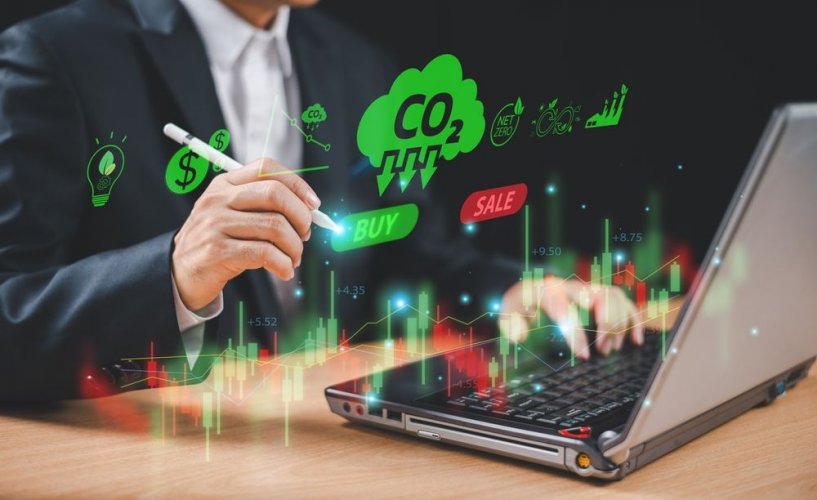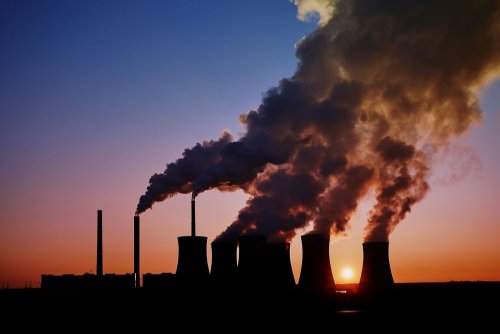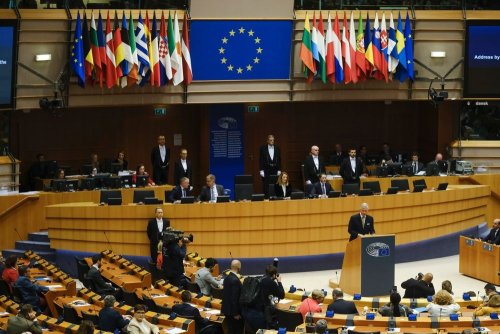According to the International Carbon Action Partnership, a third of the world's population lives in countries that have implemented ETSs to some extent. Emissions trading accounts for 17% of global CO2 emissions, and this share is projected to grow.
That's why EcoPolitic decided to help its readers to understand the questions: "What is an ETS?", "How does the EU emissions trading system work?", "What are the main elements of the European emissions trading system?", "Who can get free greenhouse gas emissions allowances?", "When will the emissions trading system start in Ukraine?".
What is ETS and what is the purpose of its implementation
The system of trading quotas for greenhouse gas emissions in the EU is a central element of the European Union's policy on combating climate change and a key tool for cost-effective reduction of greenhouse gas emissions.
It is abbreviated as EU ETS, which stands for "EU Emissions Trading System" and can be translated into Ukrainian as "EU emissions trading system" or "EU quota trading system" or "EU emissions trading system".
It is the first major carbon market in the world, which currently remains the largest by number of countries.
In a nutshell, the system of trading emission quotas in the EU:
- makes polluters pay for greenhouse gas emissions, helps reduce emissions and generates revenue to fund the EU's green transition;
- operates in all EU countries, as well as in Iceland, Liechtenstein and Norway;
- covers emissions from around 10,000 installations in the energy and manufacturing sectors, as well as aircraft operators flying within the EU and departing to Switzerland and the UK – or around 40% of EU emissions;
- from 2024 covers emissions from maritime transport.
How the EU greenhouse gas emissions trading system works
The European emissions trading system is significantly different from the taxation system in Ukraine. The EU ETS does not set a direct price for CO2.
The emissions trading system in the EU provides for the establishment of quota limits, i.e. their supply is limited. The price of quotas for greenhouse gas emissions is set on the market during auctions.
European companies buy a certain number of allowances that cover their emissions for a certain period. At the same time, enterprises can receive part of the emission quotas for free. The rest of the producers in the EU are forced to buy on the secondary market. It is an auction held on behalf of the state. Here, emission allowances can be bought from other enterprises on a special exchange. During the bidding, the price for greenhouse gas emissions, in particular CO2, is set.
If an installation or operator reduces its emissions, it can either keep the free allowances for future use or sell them.
Revenues from the EU's ETS go mainly to national budgets. Member States use them to support investments in renewable energy, energy efficiency and low-carbon technologies that contribute to further emission reductions. The sale of quotas also fills the EU ETS funds for low-carbon innovation and energy transition – the Innovation Fund and the Modernization Fund.
"The effectiveness of the EU ETS is supported by the targeted use of funds collected from investment and social funds. Currently, countries submit not only plans for energy and climate, but also for the social impact of green transformation," says Viktoriya Kireyeva, Deputy Minister of Environmental Protection and Natural Resources of Ukraine .
Main elements of the EU ETS
The central element of the system of trading quotas for greenhouse gas emissions in the EU is the unified register. It keeps track of greenhouse quotas and greenhouse emissions, where all participants have their own frameworks. The work of this registry is ensured by 2 types of administrators:
- central;
- national.
At the same time, the European emissions trading system EU ETS is decentralized. EU member states can independently appoint bodies responsible for establishing rules for trading emissions quotas at the national level. EU rules do not prohibit all control functions to be assigned to one body.
Chronology of the launch of the European emissions trading system
The first pilot phase of the emissions trading system began in 2005. During this phase, the infrastructure for emissions trading was created, in particular with regard to monitoring, reporting, and verification.
At the initial stage, the system applied only to EU countries. Over time, the coverage gradually increased. The range of greenhouse gases was also expanded, because initially the system of trading emission quotas in the EU included only carbon emissions. The distribution of free quotas has also undergone changes. In the beginning, there was a majority of them.
During the entire period of its development, many changes were made to the European greenhouse gas emissions trading system (EU ETS). And they were not always successful. From time to time, the emissions trading system needed additional intervention to return to balanced operation.
"The ETS market in the EU was formed with certain nuances. During the launch period of the EU ETS in 2005-2012, quotas were formed in excess for most producers, in particular for the metallurgical industry, and the total profit of companies amounted to more than $8 billion for all 19 industries. In the EU in 2005 "In 2018, industry reduced its emissions by 1%, energy by 22%. This happened thanks to a serious reduction in quotas for coal generation and a significant increase in RES," recalls Volodymyr Buzhan, head of the Energy and Climate Department of the Center for Economic Recovery.
GMK Center analyst Andrii Hlushchenko explained, that the first phase of the European ETS (EU ETS) was launched for about 5 years and the system was systematically improved. Currently, the fourth phase of the EU ETS, which has been going on for 19 years, is already operating in the EU.
Who gets free allowances for greenhouse gas emissions?
Currently, the EU maintains free quotas in order to prevent the so-called carbon leakage – the transfer of production capacities to countries with less stringent environmental requirements for greenhouse gas emissions. This is relevant, first of all, for those enterprises that do not have technologies for rapid decarbonization. Free quotas allow them to wait for the necessary technologies to reduce carbon emissions.
They are distributed on the basis of benchmarks, i.e. the emissions of the most efficient plants in the industry and reflect 10% of the emissions of the most progressive enterprises. Benchmarks gradually decrease, which encourages enterprises to gradually reduce their emissions. In 2020, 40% of quotas were allocated in the European Union based on benchmarks.
Starting from 2026, the volumes of free quotas will begin to decrease due to the full implementation of the carbon import adjustment mechanism – CBAM.
When will the emissions trading system in Ukraine become operational?
The introduction of STV is one of the requirements of the Association Agreement with the EU. Officials of the European Union constantly remind their Ukrainian colleagues about the need to implement Directive 87 "On establishing a system of trading quotas for greenhouse gas emissions within the Union."
The head of the Ministry of Environmental Protection and Natural Resources, Ruslan Strelets, announced the following plans for the introduction of a system of trading quotas for greenhouse gas emissions in Ukraine:
- adopt the law on the emissions trading system in 2024;
- launch ETS in 2025 in pilot mode;
- fully launch ETS in 2026.
Experts cite two necessary prerequisites for the launch of the emissions trading system in our country. It:
- Availability of a really working system of monitoring, reporting and verification of greenhouse emissions (GHG). It is necessary to accurately determine the amount of greenhouse gas emissions that enterprises must cover with purchased quotas.
- Approval of the updated Nationally Determined Contribution to the Paris Agreement (NVV-3). It is necessary for setting the emission limit in the ETS. The document should serve as a guideline for the volume of supply on the market and will have a direct impact on the competitiveness of the economy. Its development will become possible only after the end of hostilities.
In order to optimally launch the trading of emissions quotas, there must be a sufficient amount of verified data on the volume and dynamics of emissions. Therefore, experts advise to launch ETS at least 3 years after the start of operation of the MZV system.
Since martial law continues to operate in our country, enterprises have the right to postpone the submission of emission reports within the framework of the Ministry of Foreign Affairs. Therefore, the possibility of starting even the pilot phase of the implementation of the emissions trading system in Ukraine is postponed to 2027.
According to the coordinator of the Industrial Ecology and Sustainable Development Committee of the European Business Association Olga Boyko, introduction of ETS is not a panacea to avoid payment within the framework of CBAM. She said that out of more than 10 countries that have their own STVs, only Switzerland was exempted from paying CBAM.
The launch of the emissions trading system in Ukraine will allow in the future to agree on possible mutual recognition of ETS of other countries and special conditions of economic cooperation.
Andrii Hlushchenko said that Ukraine can use certain European developments in STV. However, it is impossible to completely copy the system due to different degrees of economic development.
Olga Boyko is also sure that the parameters of the emissions trading system in Ukraine should be designed as close as possible to the European model, but taking into account the state of the Ukrainian economy, which suffered from the war, the level of technical development of Ukrainian enterprises and the specifics of the state administration system and the interaction between the state and business.
"If the system will be built qualitatively and expertly, and not hastily in order to achieve "turbo results", then the main positive will be the inclusion of Ukraine in European funds for the financing of decarbonization and green transformation of industry", – summarized Stanislav Zinchenko, head of the Committee for Industrial Ecology and Sustainable Development of the European Business Associations.





